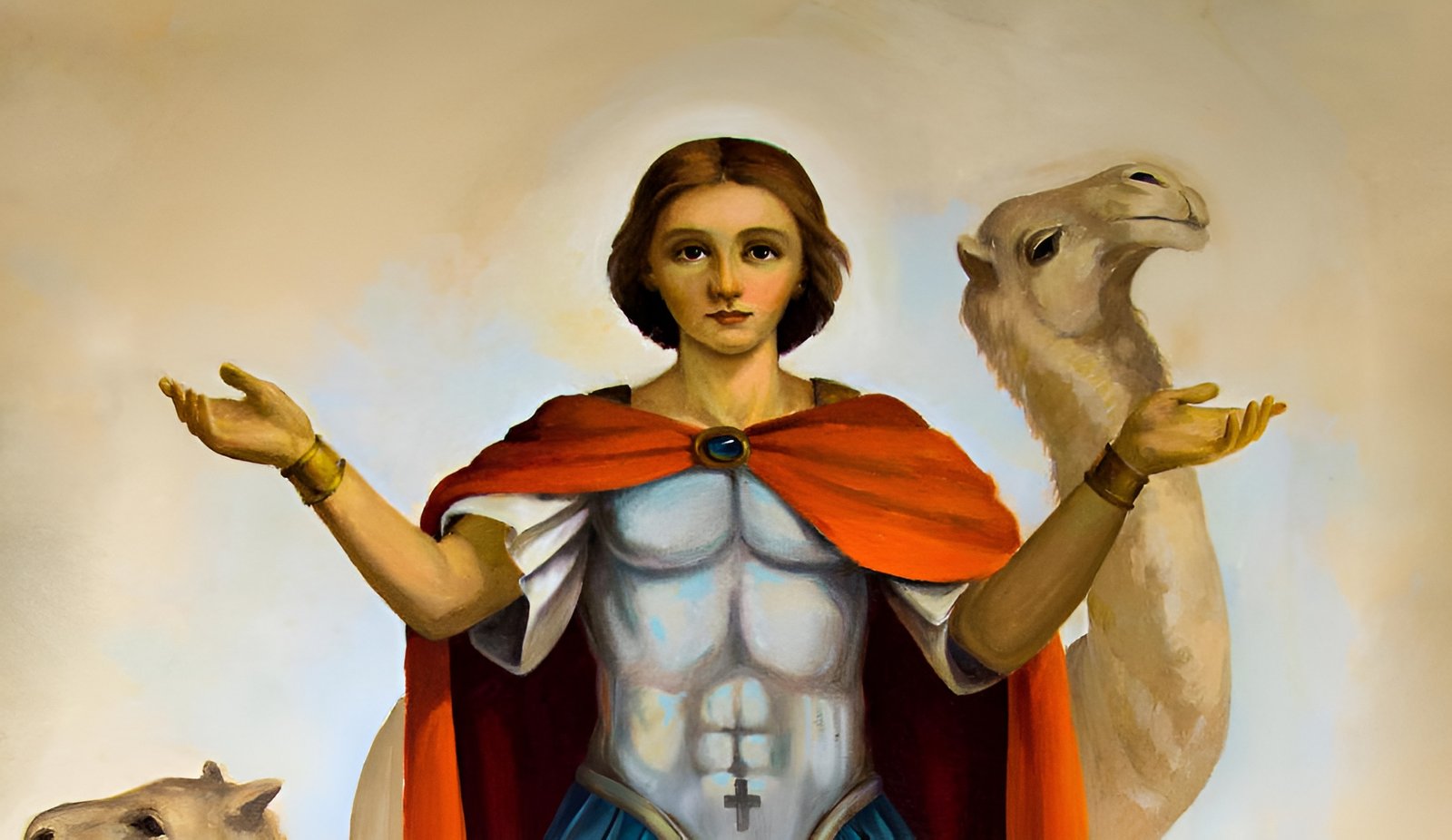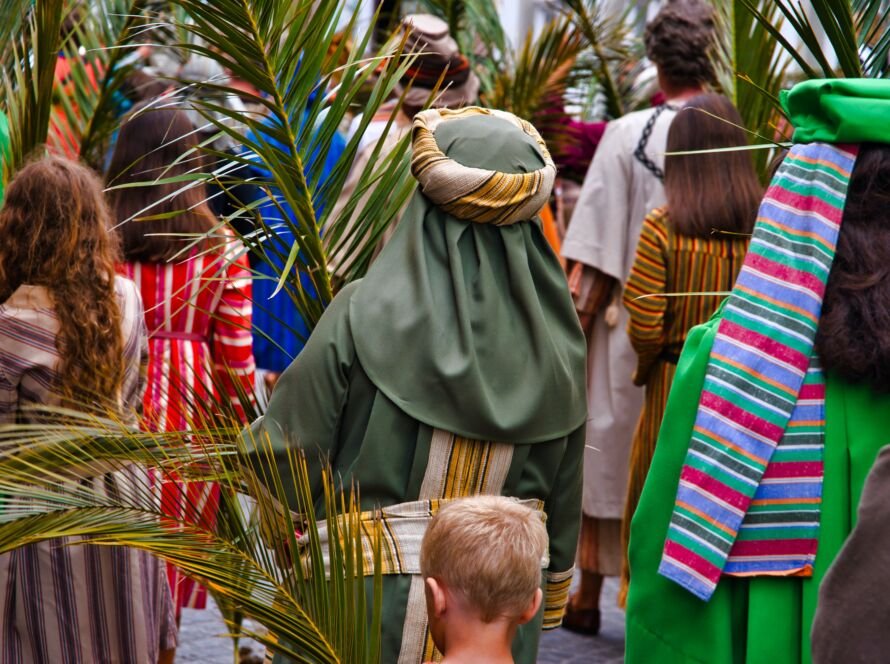St. Mina, also known as the Wonder Worker, is a revered figure in the Coptic Church. Born in Egypt in the late 3rd century, he dedicated his life to Christianity and is celebrated for his miracles and martyrdom. St. Mina is said to have healed the sick, cast out demons, and performed other wonders during his life. His death at the hands of Roman authorities only added to his legacy, as he is considered a martyr for his faith. Today, St. Mina is still honored and celebrated within the Coptic Church, which is one of the oldest Christian churches in the world. In this article, we will explore the life and legacy of St. Mina, including his early years, miracles, martyrdom, and ongoing significance in the Coptic Church and beyond.
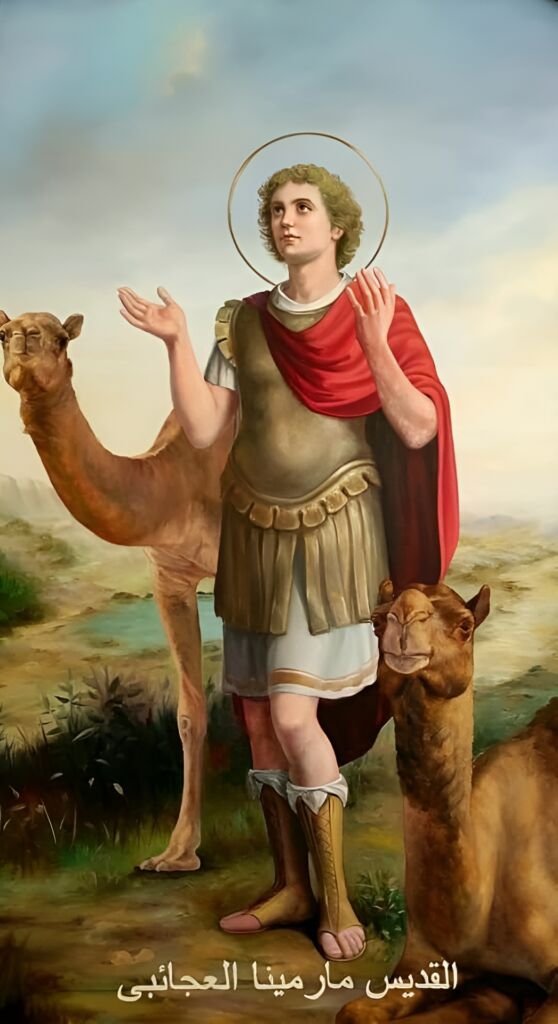
The Early Life of St. Mina
St. Mina was born in Egypt in the late 3rd century. He was the son of Christian parents who instilled in him a deep faith from an early age. He was a soldier in the Roman army before he became a Christian. While serving in the army, he witnessed the persecution of Christians, which caused him to become even more devoted to his faith.
St. Mina eventually left the army and withdrew to the desert to live as a hermit. During this time, he is said to have performed many miracles, including healing the sick and casting out demons. His reputation as a holy man spread quickly, and people from all over came to seek his guidance and blessings.
Despite his popularity, St. Mina remained humble and continued to live a simple life. He spent his days in prayer and meditation, and his nights in vigil. He was known for his kindness and compassion, and he never turned away anyone who came to him seeking help.

Modern-Day Miracles Attributed to St. Mina
St. Mina is known as the Wonder Worker due to the many miracles attributed to him during his lifetime. He is said to have healed the sick, cured the blind, and even raised the dead. Many people sought out his help, and he was always willing to assist those in need.
The book of O AGIOS MHNAS by Archimandrite Kharalampus Vasilopolo, Athens, 1973, is full of remarkable miracles performed by St. Mina. Here are three beautiful miracles from the book.
Martyr Mena protects the Christians on the Island of Crete
This miracle took place in 1826 on the Island of Crete, Turkish soldiers surrounded St. Mena Church where the Greek congregation was gathered for Easter liturgy. The soldiers were prepared to massacre everyone, but they were frightened away by the appearance of a bright light and an old cavalryman with a sword, whom they mistook for their commander. It was later realized that the cavalryman was St. Mina, who had saved the Christians.

Bombs do not hit Saint Mena Monastery at Eginia Island
This miracle took place in May 1941 on Eginia Island, where a deserted chapel named after St. Mina was rebuilt and established as a convent. During World War II, the Germans dropped many bombs over the church, but miraculously, no one was hurt. Two bombs fell inside the convent, but they did not explode. This miracle led the citizens of Herakleion to take refuge in St. Mina Church during air raids.
The third story occurred during the German occupation of Greece in April 1943. The governor of Philia village ordered his soldiers to guard the four corners of the village to prevent citizens from helping rebels who were hiding in the mountains. One soldier was guarding the Church of St. Mina when he was approached by a horseman who asked him sharply in German what he was doing in his house. The soldier was terrified and fell to the ground when the horseman warned him to leave the place. The same thing happened the next day with another soldier, and when the governor investigated, he found the icon of St. Mina in the church. The citizens of Philia then asked for the intercession of St. Mina whenever they were in danger from the colonists.
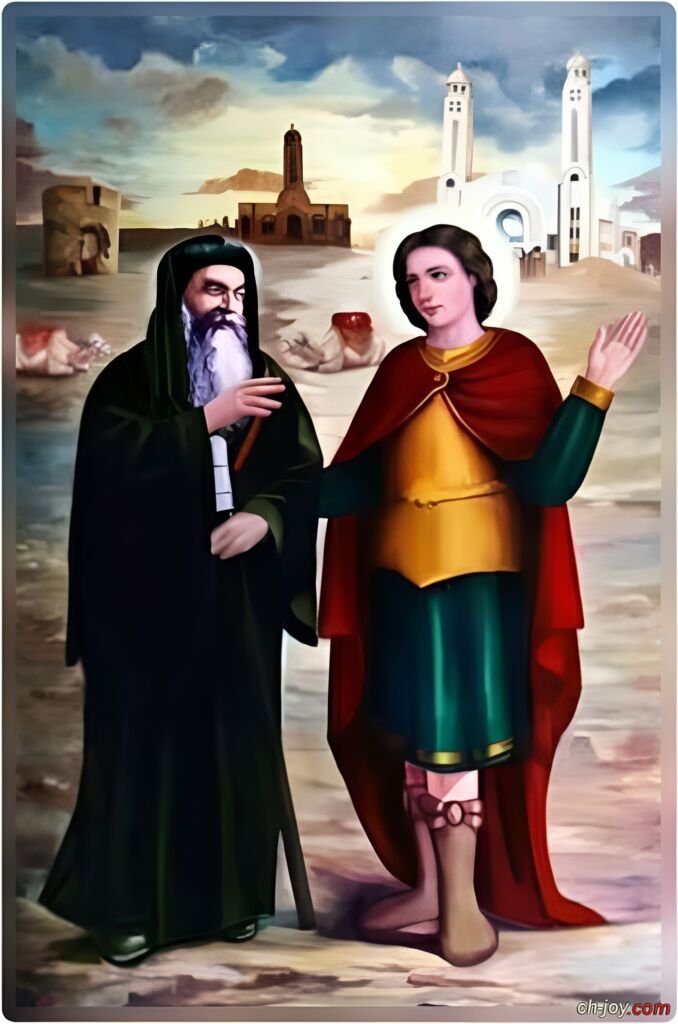
Martyr Mena drives away a soldier of the colonists
This miracle occurred during the German occupation of Greece in April 1943. The governor of Philia village ordered his soldiers to guard the four corners of the village to prevent citizens from helping rebels who were hiding in the mountains. One soldier was guarding the Church of St. Mina when he was approached by a horseman who asked him sharply in German what he was doing in his house. The soldier was terrified and fell to the ground when the horseman warned him to leave the place. The same thing happened the next day with another soldier, and when the governor investigated, he found the icon of St. Mina in the church. The citizens of Philia then asked for the intercession of St. Mina whenever they were in danger from the colonists.
The Martyrdom of St. Mina
St. Mina’s life as a Christian came to a tragic end when he was martyred for his faith. During the persecution of Christians under Emperor Diocletian, he was arrested and brought before the Roman authorities.
Despite being subjected to torture and imprisonment, he refused to renounce his faith. He was determined to remain true to his beliefs, even in the face of great suffering.
He was eventually sentenced to death by beheading. However, as the executioner swung his sword, it shattered against St. Mina’s neck. This miracle was interpreted as a sign of St. Mina’s divine protection, and the executioner converted to Christianity on the spot.
St. Mina was eventually martyred by other means, but his legacy as a martyr for the Christian faith lived on. His courage, faith, and devotion to God continue to inspire people around the world.
Today, he is remembered as a symbol of bravery and determination in the face of persecution. His sacrifice serves as a reminder of the importance of standing up for one’s beliefs, even when it is difficult or dangerous to do so.
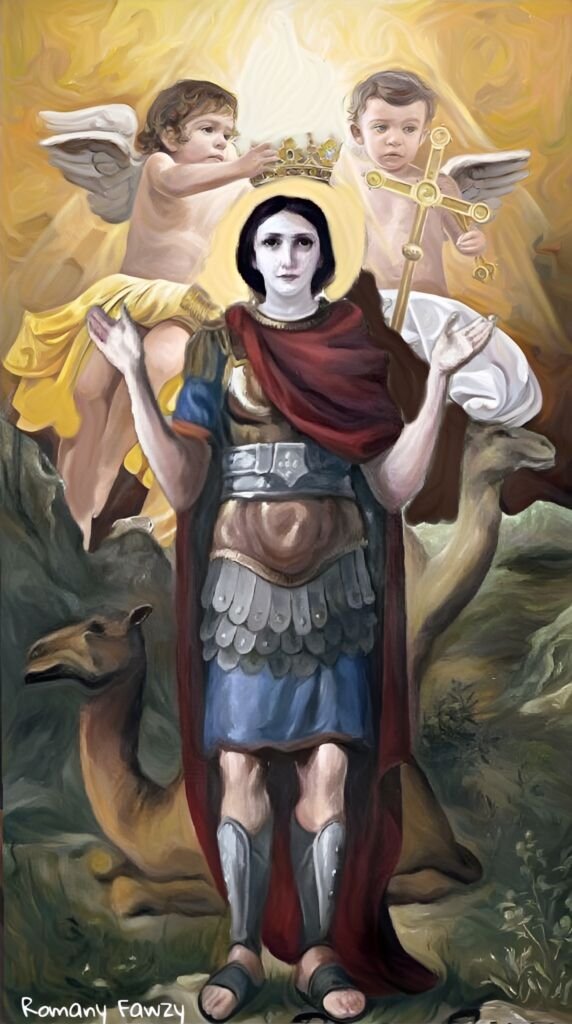
The Significance of St. Mina
St. Mina is an important figure in the history of Christianity, particularly in the Coptic Church. He is remembered as a symbol of courage, faith, and devotion to God, and his life and teachings continue to inspire people around the world.
One of the key reasons for St. Mina’s significance is his role as a martyr for the Christian faith. His refusal to renounce his beliefs, even in the face of torture and death, is a powerful example of the importance of standing up for one’s faith. St. Mina’s sacrifice is a reminder of the many Christians throughout history who have faced persecution and martyrdom for their beliefs.
He is also known for his many miracles. These miraculous acts are seen as evidence of his divine favor and are a testament to his deep faith and devotion to God. The miracles attributed to St. Mina have inspired countless people over the centuries and have helped to solidify his reputation as a holy man.
St. Mina is also revered as a patron saint of many Coptic churches. His image is often depicted in icons and artwork, and he is remembered in prayers and liturgies.
Overall, the significance of St. Mina lies in his example of unwavering faith and devotion to God. His life and teachings continue to inspire people of all faiths and serve as a reminder of the power of belief and the importance of standing up for what one believes in.
To Sum Up
St. Mina’s legacy lives on in the many churches and communities that honor him as a patron saint, and his image is often depicted in icons and artwork. His miraculous acts are still celebrated and remembered today, and his example of devotion to God continues to inspire believers of all faiths.
Check out what Father Daoud has to say about his life and teachings:


